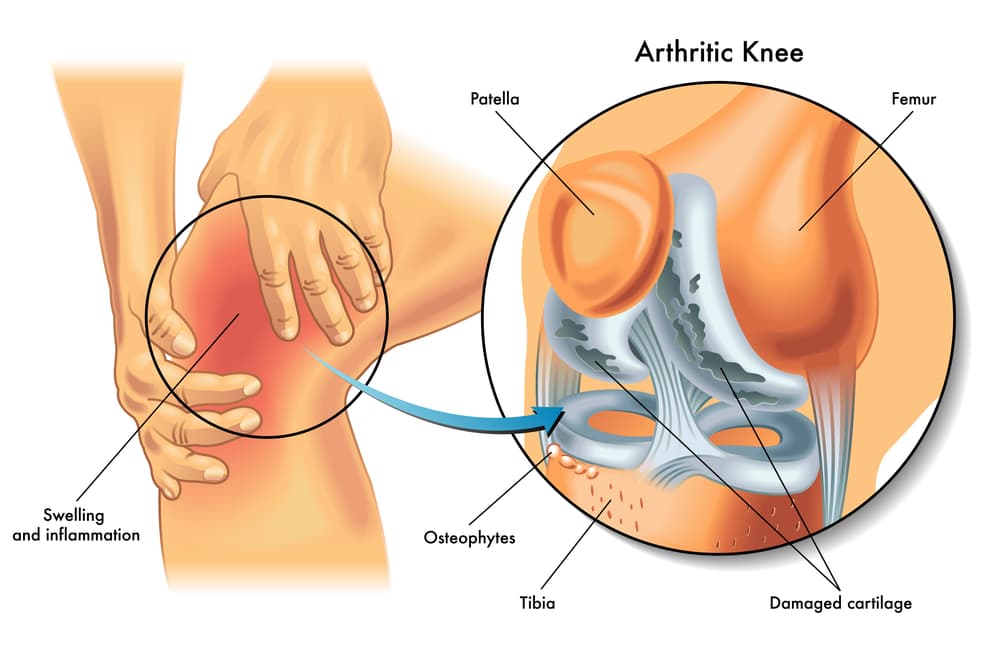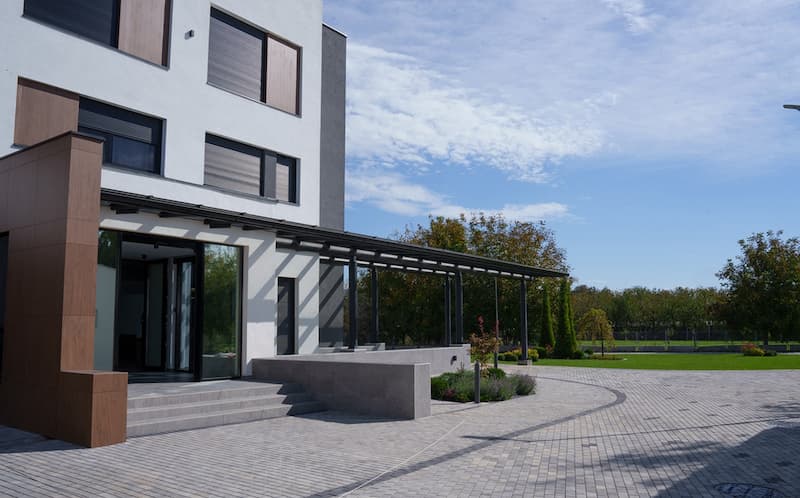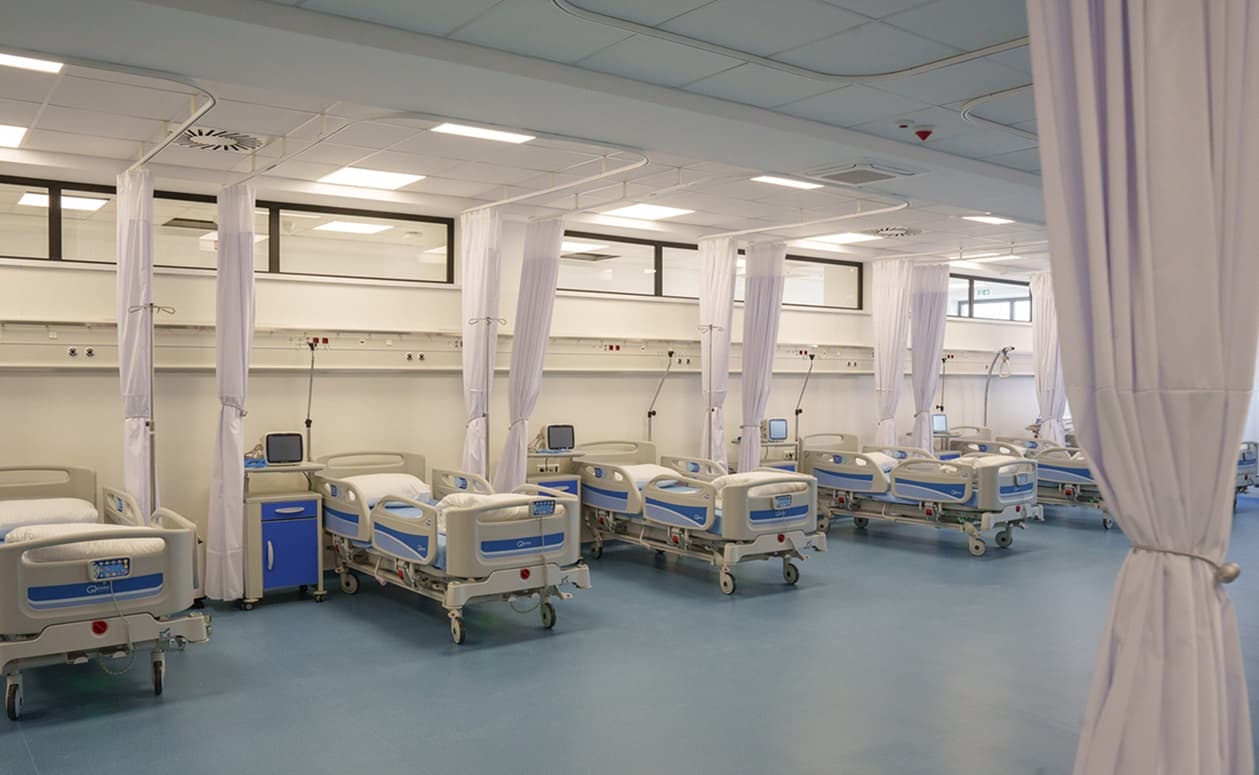Knee pain isn’t just for seniors; in fact, over 25% of people between 20 and 70 around the world experience it. The reasons can be anything from the gradual breakdown of the joint over time to meniscus tears from playing sports.
This kind of pain can really hold you back. It makes simple things like walking, doing chores, or standing for a while a struggle. You might feel stiff in the morning, and then the pain comes back to bother you all day long, making it difficult to focus on work or enjoy your spare time. It can really take a toll on your quality of life.

In addition to the usual options like physical therapy and surgery, there’s also stem cell therapy for knee pain, which is a cutting-edge approach. Used alongside traditional methods, it can help accelerate the process of repairing damaged cartilage and joints.
In this article, we will look at the most common causes of knee pain and stem cell treatment for various knee diseases. Exploring the possibilities of stem cells for knee pain can empower you to make informed decisions and take control of your knee health, whether you’re just starting your research or seeking long-term relief.
What Is Stem Cell Therapy for Knee Pain?
Stem cell therapy for knee pain is a regenerative medicine approach that uses stem cells to stimulate the growth and repair of cartilage, bone, and tendons, leveraging the body’s natural healing mechanisms.
Unlike traditional treatments that often just manage symptoms, stem cells for knee pain aim to address the root cause of the pain by promoting recovery at a cellular level.
How Stem Cells Work in Joint Regeneration
Once stem cells reach the injured area in the knee, they release powerful growth factors that encourage cells to multiply and turn into new cartilage, bone, or tendon tissue, helping to restore the damaged area.
These cells also release:
- Chemokines: Signals that attract other helpful cells, including those that boost the immune response, to the injury site, further promoting healing.
- Adhesion molecules: Substances that help cells stick together and communicate, ensuring they work together effectively to repair the tissue.
This process of stem cell therapy for knee pain improves blood flow to the damaged tissues, delivers essential nutrients, and reduces inflammation. The overall result is a better environment for tissue regeneration and improved function in the injured knee.
Common Causes of Knee Pain and How Stem Cells Can Help
Knee pain can be caused by various factors, and understanding them is critical for determining the best course of treatment and predicting recovery time. Let’s explore these causes in more detail.
Osteoarthritis and Cartilage Degeneration
Osteoarthritis is a degenerative joint disease characterized by the progressive breakdown of cartilage, the smooth, shock-absorbing tissue that covers the ends of bones in a joint. This breakdown leads to bone-on-bone friction, causing pain, stiffness, and decreased range of motion.
In advanced cases, bone spurs (osteophytes) may also form, further exacerbating pain and limiting mobility. While age-related wear and tear is a major cause of osteoarthritis, genetics, obesity, prior injuries, and repetitive strain can significantly increase the risk.
Stem cell treatment for knee pain offers a potential regenerative solution for osteoarthritis. The injected stem cells can reduce inflammation, improve blood supply, and stimulate overall tissue regeneration.
Meniscus Tears and Ligament Injuries
Meniscus tears and ligament injuries disrupt essential knee function. The meniscus, a C-shaped cartilage, cushions the joint between the thighbone and shinbone, while ligaments provide stability.
Injury to these tissues, such as ACL tears, can cause pain, instability, swelling, and difficulty bearing weight:
- Meniscus tears often result from twisting motions, particularly during sports, or from age-related degeneration.
- Ligament injuries, especially ACL tears, are frequently caused by sudden stops, changes in direction, or direct impacts, common in sports like soccer, basketball, and skiing.
Stem cell treatment for knee pain aids in the recovery of meniscus and ligament injuries by creating an environment conducive to faster recovery and strengthening the knee.
Chronic Inflammation and Joint Stiffness
Chronic knee inflammation, stemming from autoimmune diseases, unresolved injuries, or repetitive strain, leads to pain, stiffness, and reduced motion, potentially damaging joint tissues.

Stem cell treatment for knee pain can help by releasing anti-inflammatory factors, modulating the immune system, and improving joint lubrication.
Knee Pain from Sports Injuries
Athletes face a high risk of knee injuries, like sprains and tears, due to the demands of their sport. These injuries, often caused by sudden impacts, twisting motions, overuse, or poor conditioning, result in pain and reduced performance.
Stem cell injections for knee pain can help athletes return to sports faster by improving tissue quality and restoring function, resulting in better athletic performance.
Learn more about stem cell therapy for sports injuries, including potential outcomes and post-treatment improvements in sports careers.
Learn moreTypes of Stem Cells Used in Knee Pain Therapy
At Swiss Medica, we utilize only mesenchymal stromal cells (MSCs). For knee pain, stem cell treatments with MSCs have regenerative properties and anti-inflammatory effects that can contribute to pain relief and support a faster recovery.
In the stem cell treatment for knee pain, we mostly use these kinds of MSCs:
| Adipose-derived stem cells | These stem cells are abundant and easily accessible, as they are harvested from fat tissue. |
| Bone marrow aspirate concentrate | This involves extracting bone marrow, processing it to concentrate the stem cells, and then injecting it into the knee. |
In most cases, we utilize donor stem cells, though a patient’s own stem cells may also be incorporated into the treatment.
How Is Stem Cell Therapy for Knee Pain Performed?
The procedure typically involves these steps:
- Harvesting: Stem cells are extracted from the patient’s own body, usually from bone marrow or adipose tissue (fat).
- Processing: The harvested stem cells are processed to concentrate them and separate them from other cells.
- Injection: The concentrated stem cells are injected directly into the damaged area of the knee joint.
- Rehabilitation: After stem cell injection for knee pain, patients are typically given specific instructions for post-procedure care, which may include rest, immobilization for a short period, and a tailored rehabilitation program involving physical therapy.
Learn more about stem cell injections for arthritis and the expected outcomes for patients.
Read moreWho Is a Good Candidate for Stem Cell Therapy?
To determine whether stem cell treatment for knee pain can benefit you, specialists must first assess the severity and specificity of the problem. Candidates could be:
Patients Seeking Non-surgical Alternatives
While stem cell therapy for knee pain isn’t a way to completely avoid surgery, it can, in some cases, be used alongside surgery to help tissues heal better and improve the overall outcome. This can be important for people hoping to postpone or prevent surgery.
Individuals with Chronic Knee Pain
Those suffering from chronic knee pain due to arthritis, injuries, or other conditions may benefit from stem cell treatment for knee pain.
Athletes Looking for Faster Recovery
Athletes in various sports who are looking to speed up their recovery and return to play as quickly as possible may be good candidates for stem cell therapy for knee pain.
Get a free online consultation
Discover if stem cell therapy is the right path for you or a loved one. Schedule a free, no-obligation consultation with our medical advisor today.

Medical Advisor, Swiss Medica doctor
Benefits of Stem Cell Therapy for Knee Pain
Stem cells for knee pain offer several potential advantages:
Natural Healing Without Surgery
Stem cell therapy helps the body naturally restore itself, potentially reducing the need for invasive surgery, especially in early-stage disease. In later stages of cartilage degeneration, stem cell treatment can enhance the effects of surgery.
Faster Recovery Compared to Traditional Treatments
Recovery time is typically shorter than with surgery, allowing patients to return to their daily activities more quickly.
Reducing Pain and Inflammation for Long-Term Recovery
Stem cells for knee pain can help reduce inflammation, alleviate pain, and improve joint function over time.
Regenerating Cartilage and Tissue over Time
Stem cells can stimulate the regeneration of damaged cartilage and other tissues, potentially lowering the risks of future trauma or surgery. Stem cell therapy for sports injuries can assist active people and athletes in returning to a normal level of activity.
Comparing Stem Cell Therapy to Other Knee Pain Treatments
Here are some of the most common methods used in medicine to restore knee function.
| Treatment | Description | Effects |
| Stem cell therapy | Uses stem cells to regenerate damaged tissues in the knee. | Minimally invasive, faster rehabilitation in combination with traditional treatments, potential for long-term recovery. |
| Physical therapy | Exercises and stretches to strengthen muscles and improve joint mobility. | Non-invasive, safe, slowly improves functions, and reduces pain. |
| Corticosteroid injections | Injections to reduce inflammation and pain. | Provides quick pain relief. Has potential side effects with repeated use; doesn’t address the underlying issue. |
| Hyaluronic acid injections | Injections to lubricate the joint and reduce pain. | Can provide pain relief and improve joint functions. May not be effective for all patients. |
| Knee replacement surgery | Replacement of the damaged knee joint with an artificial joint. | Can provide significant pain relief and improved function. Long recovery period, potential complications. |
Stem cell therapy, when combined with other treatments, can offer improved and lasting results, but it’s important to understand that it’s not a guaranteed solution for everyone.
Risks and Considerations of Stem Cell Therapy
When performed by a qualified and experienced medical professional, stem cell therapy for knee pain is generally considered safe. A review of nine trials with 339 patients showed stem cell therapy significantly improved pain and knee function over 24 months compared to traditional treatments for knee osteoarthritis, confirming its effectiveness in pain reduction without significant side effects.
As with any medical procedure, some patients may experience mild pain or discomfort after stem cell injection for knee pain, but the effect usually subsides within a few hours. Discussing the potential risks and benefits with a regenerative specialist before treatment is crucial.
Choosing the Right Clinic for Stem Cell Treatment for Knee Pain
Choosing a reputable and experienced clinic is critical for safe and effective therapy with stem cells for knee pain.
Swiss Medica, an innovative stem cell center in Serbia, has been treating a wide range of conditions since 2011, including autoimmune disorders, chronic knee pain, arthritis, and more. Over 10,000 people from all over the world have benefited from our care. We offer:
| Personalized treatment plans | After reviewing your medical history, our regenerative specialists will develop a treatment plan that may involve stem cell therapy, additional procedures, and post-treatment care. |
| All-Inclusive care | Our patients have access to a variety of services, including 24-hour medical care, a transfer service that can pick them up from Belgrade airport, and healthy meals that are customized to their specific dietary needs. |
| State-of-the-art facilities | Our brand-new medical facility offers patients spacious, well-appointed, hotel-style rooms with all the essentials for a comfortable treatment experience. |
| Own stem cell production | In our in-house lab, we use and produce ethically sourced, high-quality stem cells while maintaining strict quality control. |
We provide all necessary facilities for patients and have an A-grade laboratory with stringent cleanliness requirements. During the treatment, you can explore beautiful Belgrade and feel as if you are on vacation.
How Much Does Stem Cell Therapy for Knee Pain Cost?
Stem cell injections cost vary greatly depending on the clinic, the type of stem cells used, and the duration of the treatment. Worldwide, stem cell therapy for knee pain typically costs between €10,000 and €50,000.
The average cost of stem cell injections for knee pain at Swiss Medica is between €7,000 and €31,000*.
*The prices mentioned are indicative and subject to change based on individual factors, including the condition’s severity and the number of stem cells needed. Prices are valid as of January 2025.
Frequently Asked Questions About Stem Cell Therapy for Knee Pain
1. Are stem cells used instead of surgery?
While surgery can be effective for certain knee conditions, it is often invasive, requires a lengthy recovery period, and carries potential risks. To minimize these risks, stem cell therapy offers several advantages:
- Faster recovery: Recovery time is generally much shorter compared to surgery, allowing patients to return to their normal activities sooner.
- Reduced post-operative complications.
2. How long does it take to see results from stem cell therapy?
It can take several weeks or months to see noticeable improvements.
3. How long do the effects of stem cell therapy last?
The duration of benefits varies depending on the individual and the severity of their condition. Some patients experience long-term relief, while others may require repeat treatments.
4. How do I find a qualified stem cell therapy provider?
Look for a regenerative specialist who is experienced in a relevant specialty (e.g., orthopedics, sports medicine) and has experience in performing stem cell therapy for knee pain.
Contact us
Contact us today for a free online consultation with our regenerative specialist to discuss knee recovery strategies, understand your candidacy, and get comprehensive information on treatment success rates and costs.

Medical Advisor, Swiss Medica doctor
List of References
Bunt CW, Jonas CE, Chang JG. Knee Pain in Adults and Adolescents: The Initial Evaluation. Am Fam Physician. 2018 Nov 1;98(9):576-585. https://pubmed.ncbi.nlm.nih.gov/30325638/
Ma W, Liu C, Wang S, Xu H, Sun H, Fan X. Efficacy and safety of intra-articular injection of mesenchymal stem cells in the treatment of knee osteoarthritis: A systematic review and meta-analysis. Medicine (Baltimore). 2020 Dec 4;99(49):e23343. doi.org/10.1097/MD.0000000000023343
Huang R, Li W, Zhao Y, Yang F, Xu M. Clinical efficacy and safety of stem cell therapy for knee osteoarthritis: A meta-analysis. Medicine (Baltimore). 2020 Mar;99(11):e19434. doi.org/10.1097/MD.0000000000019434
Gadelkarim M, Abd Elmegeed A, Allam AH, Awad AK, Shehata MA, AbouEl-Enein A, Alsadek ME, Abo Deeb M, Afifi AM. Safety and efficacy of adipose-derived mesenchymal stem cells for knee osteoarthritis: A systematic review and m-analysis. Joint Bone Spine. 2022 Oct;89(5):105404. doi.org/10.1016/j.jbspin.2022.105404
Zhang X, Cui C, Lin F. Efficacy and safety of mesenchymal stem cell injections for knee osteoarthritis: A systematic review and meta-analysis. J Res Med Sci. 2024 Sep 30;29:55. doi.org/10.4103/jrms.jrms_515_23
MD, Pediatrician, Regenerative Medicine Specialist











